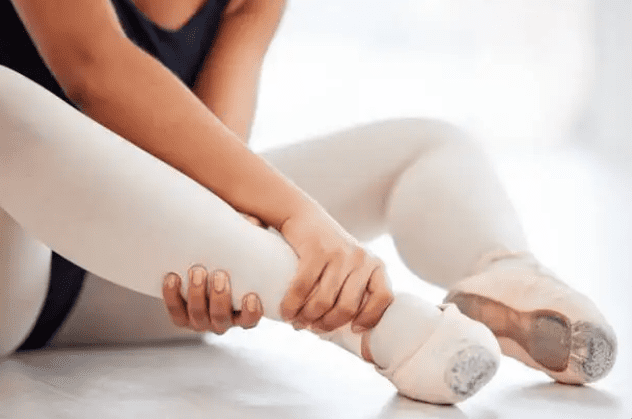7 Injury Prevention Tips:
By Olga Leibrandt Last updated: March 14, 2023 Ballet Guide 4 min read

Image by YuriArcursPeopleimages on Freepik
Injury prevention is very important in ballet dancing. Improper execution of movements can easily lead to injuries. If the body is not sufficiently prepared or certain safety aspects are missing, the risk of injury increases.
I have compiled seven points here that can help to avoid such injuries:
1. Warm up before each ballet class.
Before each ballet class, warm up and then gently start with simple stretches. You can gradually increase the intensity of the stretch.
Warming up in ballet refers to activating muscles and raising body temperature. This prepares the body for the upcoming dance activity. Typically, the warm-up begins with a combination of cardiovascular exercises, such as jumping, to get your heart rate up and warm up the body. Then follow exercises that target the specific muscle groups needed in ballet, such as the leg and foot muscles, the hips, and the back.
stretchingon the other hand, aim to improve the flexibility of the body and loosen the muscles and joints. They are typically performed after a warm-up, since cold muscle stretches can cause micro-injuries. Stretching brings muscles to their full length, which helps prevent injury and allows for greater mobility. At this point only light stretching exercises are intended.
Stretching alone is not a sufficient warm-up because it does not activate muscles or increase body temperature.
A proper "warm-up" should include both a warm-up and stretching exercises to optimally prepare the body for dancing.
You can find a comprehensive description at de.wikihow.com , for example .
2. Wear proper ballet clothing and shoes.
Tight-fitting clothing and well-fitting ballet shoes provide support for your body and can prevent injury.
One danger of ballet dancing is slipping. Ballet shoes that fit well and stick to the floor can counteract this. I wrote a little guide on this .
3. Work on your posture.
Correct posture also helps to avoid injuries.
Correct posture in ballet is achieved through proper alignment of the spine, shoulders and pelvis. The spine should be straight and erect, the shoulders should be relaxed and slumped while the pelvis is kept in a neutral position.
Incorrect posture can overload muscles and joints, which can lead to pain and injury.
Basically, it is your ballet teacher's job to control and correct your posture.
If you do exercises at home, a large mirror is useful for better control.
Also watch the following video"Basics like posture, foot and arm positions" .
4. General fitness through regular training.
Strengthening your muscles, especially the stabilizing muscles around the joints, serves to prevent injuries. Targeted training can also improve balance and coordination, which reduces the risk of falls and injuries.
Get to know your own limits during training and accept them. You must be patient and foresighted to achieve what you want.
If you understand and accept that, you can surpass yourself. Find out more at balletristic.com .
5. Avoid overtraining.
If you exercise too much, your body can become overworked and more prone to injury. Listen to your body and avoid overdoing it.
6. Take time for rest and regeneration.
Rest is just as important as exercise to avoid injury and maintain your physical health. I recommend a 48-hour break between workouts. The necessary regeneration time depends on the intensity of your exercises and your condition. If you still feel tired and sore on the third day after training, it indicates that your body or the affected muscle part needs more rest.
7. Injury or pain
listen to your body Feel whether the respective ballet exercises are doing you good.
As soon as you feel the first signs of pain or discomfort, you should talk to your ballet teacher or a qualified physical therapist. Of course, the same applies to injuries. Early treatment and rehabilitation can help injuries heal faster and prevent long-term damage.
In summary, the following seven points should be considered:
Warm up and then stretch
Proper clothing and shoes
posture
General fitness
Not too much
breaks for rest
listen to your body
If you follow these simple tips, you should be safe and healthy dancing ballet!
Other guides: